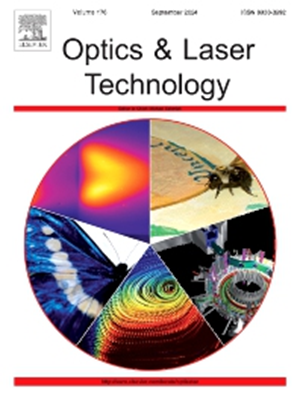内在特征引导的三维目标检测
IF 4.6
2区 物理与天体物理
Q1 OPTICS
引用次数: 0
摘要
基于激光雷达的3D目标检测对于自动驾驶系统至关重要。然而,激光雷达点云通常表现为稀疏、分布不均匀和结构不完整。在道路驾驶环境中,类中的目标对象,如车辆、行人和骑自行车的人,包含共同的内在结构特征,因此,这些对象可以非常适合通过完整模板的指导来增强表示。因此,本文提出了一种基于模板辅助特征增强模块的内在特征引导的三维目标检测方法,从相对广义的模板中提取内在特征,为前景目标提供丰富的结构信息。此外,设计了一种提议级监督对比学习机制,增强前景和背景对象之间的特征差异,使模型能够更好地区分对象类别。所提出的模块是即插即用的,它总是可以提高现有方法的性能。大量的实验表明,该方法取得了极具竞争力的检测结果。代码将在https://github.com/zhangwanjingjj/IfgNet.git上提供。本文章由计算机程序翻译,如有差异,请以英文原文为准。
Intrinsic-feature-guided 3D object detection
LiDAR-based 3D object detection is essential for autonomous driving systems. However, LiDAR point clouds usually exhibit sparsity, uneven distribution, and incomplete structures. In road driving environments, target objects within a class, such as vehicles, pedestrians, and cyclists, contain common intrinsic structural features thus, these objects can be well-suited for enhancing representation through the guidance of complete templates. Therefore, this paper presents an intrinsic-feature-guided 3D object detection method based on a template-assisted feature enhancement module, which extracts intrinsic features from relatively generalized templates and provides rich structural information for foreground objects. Furthermore, a proposal-level supervised contrastive learning mechanism is designed to enhance the feature differences between foreground and background objects, enabling the model to distinguish object classes better. The proposed modules are plug-and-play, which can always improve the performance of existing methods. Extensive experiments illustrate that the proposed method achieves highly competitive detection results. Code will be available at https://github.com/zhangwanjingjj/IfgNet.git.
求助全文
通过发布文献求助,成功后即可免费获取论文全文。
去求助
来源期刊
CiteScore
8.50
自引率
10.00%
发文量
1060
审稿时长
3.4 months
期刊介绍:
Optics & Laser Technology aims to provide a vehicle for the publication of a broad range of high quality research and review papers in those fields of scientific and engineering research appertaining to the development and application of the technology of optics and lasers. Papers describing original work in these areas are submitted to rigorous refereeing prior to acceptance for publication.
The scope of Optics & Laser Technology encompasses, but is not restricted to, the following areas:
•development in all types of lasers
•developments in optoelectronic devices and photonics
•developments in new photonics and optical concepts
•developments in conventional optics, optical instruments and components
•techniques of optical metrology, including interferometry and optical fibre sensors
•LIDAR and other non-contact optical measurement techniques, including optical methods in heat and fluid flow
•applications of lasers to materials processing, optical NDT display (including holography) and optical communication
•research and development in the field of laser safety including studies of hazards resulting from the applications of lasers (laser safety, hazards of laser fume)
•developments in optical computing and optical information processing
•developments in new optical materials
•developments in new optical characterization methods and techniques
•developments in quantum optics
•developments in light assisted micro and nanofabrication methods and techniques
•developments in nanophotonics and biophotonics
•developments in imaging processing and systems

 求助内容:
求助内容: 应助结果提醒方式:
应助结果提醒方式:


